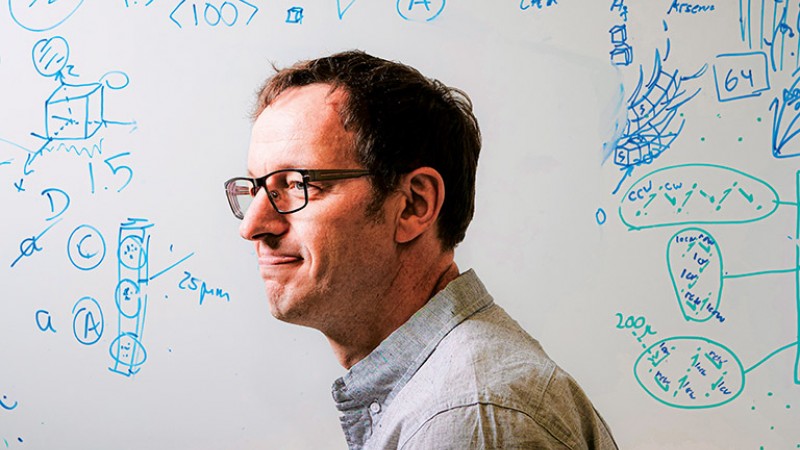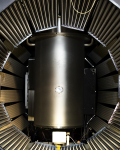By Élan Young (article courtesy of the University of Tennessee, Knoxville)
Three nuclear engineering researchers—Associate Professor Maik Lang; Postdoctoral Researcher Eric O’Quinn; and Graduate Research Assistant Devon Drey—along with Materials Science and Engineering Professor Kurt Sickafus, made a scientific breakthrough on the understanding of the atomic arrangement of disordered ceramics. Other researchers on the team included Rodney Ewing of Stanford University, Gianguido Baldinozzi of the University of Paris-Saclay, and Antonio Fuentes of the Cinvestav Unidad Saltillo, Mexico.
Such ceramics are found in a wide variety of energy technologies, including nuclear fuels, complex electronics, and solid oxide fuel cells. The research article entitled “Predicting Short-Range Order and Correlated Phenomena in Disordered Crystalline Materials,” was published in Science Advances and is largely the result of O’Quinn’s (NE ’19) graduate research. The work was supported as part of the US Department of Energy, Office of Science.
Prior to their finding, it was thought that only the atomic arrangement of ordered materials could be predicted using Pauling’s Rules, a set of chemical principles originally published in 1929 by Linus Pauling. The rules describe how far apart ions should be and how many neighboring ions they should have and are based on simple geometric and mathematical concepts.
The team showed that these fundamental rules are not only useful to describe ordered materials, but they can also explain to what positions atoms move once disorder is introduced in the system, something which was not understood before.
“Complex ceramics consist of two or more positively charged metal ions and oxygen,” said Lang. “Disordering leads to mixing of the positively charged ions, or cations, which can result in important properties, such as increased electrical conductivity, resistance to radiation damage, and exotic magnetism.”
Their research shows that the cations are not as randomly mixed as previously thought, but instead arrange themselves in specific “building blocks,” which are characterized by a high degree of order. Similar phenomena have been observed by other researchers in a wider range of materials.
To gain further insight, the team has studied the well-known disordered ceramics pyrochlore and spinel oxides, which are ideal because they contain multiple cations that are different in size and have different charges. The goal of this study was to determine whether there are simple chemical rules that dictate how the different atoms arrange themselves, which would not only allow to better understand the nature of disorder, but also to predict atomic arrangements in disordered oxides.
The research was accomplished by using the Spallation Neutron Source at Oak Ridge National Laboratory (ORNL), the most intense pulsed neutron source in the world, which enabled the study of even very small quantities of disordered materials.
With the help of ORNL scientists Matthew Tucker and Joerg Neuefeind, the research team used the Nanoscale-Ordered Materials Diffractometer (NOMAD) to determine atomic positions by neutron scattering experiments. Neutrons are very important for this kind of study because they are also sensitive to the position of light atoms such as oxygen. Only with such advanced measurements, the team was able to discover the underlying mechanisms that dictate disordering.
This knowledge yields promise to engineer materials at the atomic-scale to improve their functionality. For instance, designing a material that can safely encapsulate highly-radioactive actinides generated by nuclear power plants requires knowledge of the structural behavior under intense radiation in order to minimize atomic motion and disorder.
+Read orginal article at UTK, Department of Nuclear Engineering
SNS is a DOE Office of Science User Facility. UT-Battelle LLC manages ORNL for the DOE Office of Science. The Office of Science is the single largest supporter of basic research in the physical sciences in the United States and is working to address some of the most pressing challenges of our time. For more information, please visit energy.gov/science.







